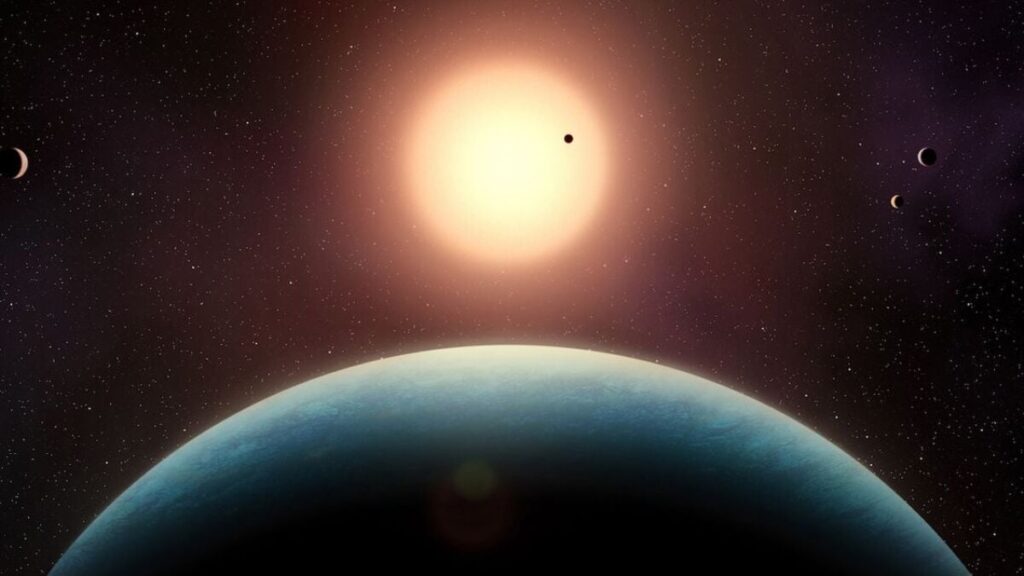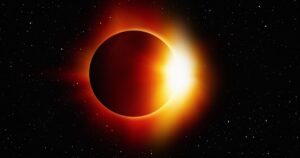
In a significant breakthrough for the search for extraterrestrial life, scientists have identified a potentially habitable exoplanet orbiting the red dwarf star L 98-59, located approximately 35 light-years from Earth. This newly discovered super-Earth, named L 98-59 f, is part of a system of five exoplanets that could provide crucial insights into the formation and composition of rocky worlds.
The discovery was made using data from NASA’s Transiting Exoplanet Survey Satellite (TESS) and advanced instruments in Chile. Researchers from the Université de Montréal confirmed that L 98-59 f lies within the star’s habitable zone, where conditions might allow for the presence of liquid water. This finding raises the possibility that the planet receives a similar amount of warmth from its star as Earth does from the sun.
The L 98-59 System: A Laboratory of Rocky Worlds
The L 98-59 system has already garnered attention for its diverse range of exoplanets. René Doyon, a researcher involved in the study, emphasized the system’s potential to answer critical questions in planetary science. “With its diversity of rocky worlds and range of planetary compositions, L 98-59 offers a unique laboratory to address some of the field’s most pressing questions,” Doyon stated.
“What are super-Earths and sub-Neptunes made of? Do planets form differently around small stars? Can rocky planets around red dwarfs retain atmospheres over time?”
Red dwarf stars, like L 98-59, are the most common type in the Milky Way galaxy. However, the ability of planets orbiting these stars to maintain atmospheres remains uncertain. Néstor Espinoza, a researcher at the Space Telescope Science Institute, highlighted the importance of detecting atmospheres in the search for habitable worlds, noting that Earth’s atmosphere acts as a protective “security blanket.”
Atmospheric Studies: The Next Frontier
Espinoza is leading a new study using the James Webb Space Telescope to explore whether planets around red dwarfs can sustain atmospheres. This initiative will examine a dozen nearby exoplanets over the next two years, including those in the L 98-59 system.
One of the planets, L 98-59 d, has already been observed by a separate research team. Initial findings suggest it might possess a sulfur-rich atmosphere, potentially filled with the scent of burnt matches and rotten eggs. Agnibha Banerjee, a researcher involved in the study, cautioned that further observations are needed to confirm these findings.
“If these findings can be confirmed and turn out to be true, this planet won’t be pleasant on human noses,” Banerjee noted. “Then again, if a human in the far future were to ever visit, the smell would be the least of their problems — in the midst of crushing pressure, boiling temperatures, and toxic gases.”
Innovative Techniques and Future Prospects
The discovery of L 98-59 f was achieved without new telescope observations. Instead, scientists employed innovative techniques to extract more information from existing data. The planet does not transit its star from Earth’s perspective, making it invisible to traditional detection methods. Researchers identified it through subtle shifts in the star’s motion, caused by the gravitational pull of the unseen planet.
By reanalyzing data, scientists also refined estimates of the other planets’ characteristics, revealing one as a rare “sub-Earth” and others as potentially water-rich or geologically active. These findings have reinvigorated optimism in the search for habitable worlds, drawing comparisons to the TRAPPIST-1 system.
“With these new results,” said coauthor Alexandrine L’Heureux, “L 98-59 joins the select group of nearby, compact planetary systems that we hope to understand in greater detail over the coming years.”
The latest findings, including the discovery of L 98-59 f, will be detailed in an upcoming paper in The Astronomical Journal. Charles Cadieux, the study’s lead author, emphasized the significance of combining data from space and ground-based telescopes, noting that it provides key targets for future atmospheric studies with the James Webb Space Telescope.
The L 98-59 system continues to offer valuable insights into the nature of exoplanets, paving the way for future explorations and a deeper understanding of potential habitable worlds beyond our solar system.





